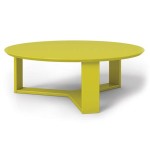George Nakashima Coffee Table: A Fusion of Art and Functionality
In the world of furniture design, few names hold the same level of reverence as George Nakashima. A Japanese-American woodworker and architect, Nakashima is renowned for his handcrafted furniture pieces that seamlessly blend modern design with traditional Japanese aesthetics. Among his most iconic creations is the George Nakashima Coffee Table, a timeless masterpiece that embodies his unique design philosophy and enduring legacy. ### Inspiration and Design George Nakashima's design journey was deeply influenced by his upbringing in Japan and his fascination with traditional Japanese woodworking techniques. He believed that furniture should not merely serve a functional purpose but also possess a profound aesthetic and spiritual value. The George Nakashima Coffee Table exemplifies this philosophy, capturing the essence of Japanese simplicity and minimalism. ### Construction and Materials Nakashima crafted his coffee tables using a variety of woods, including American black walnut, cherry, and maple. Each piece was meticulously handcrafted, showcasing Nakashima's exceptional woodworking skills and attention to detail. The tables typically feature a solid wood slab top supported by a sculptural base made of interlocking wooden elements. ### Organic Forms and Natural Beauty A defining characteristic of George Nakashima's work is his emphasis on organic forms and natural beauty. The coffee tables often display a flowing, sculptural quality, with curved edges and irregular shapes that evoke a sense of movement and dynamism. Nakashima believed that furniture should harmonize with its surroundings, and his tables exude a sense of earthy elegance that complements both modern and traditional interiors. ### Joinery Techniques and Craftsmanship Nakashima's coffee tables showcase his mastery of traditional Japanese joinery techniques, such as the butterfly joint and the mortise and tenon joint. These techniques not only add structural integrity to the pieces but also serve as decorative elements, highlighting the beauty of the wood's grain and the craftsman's skill. ### Legacy and Influence George Nakashima's coffee tables have become highly sought-after collector's items, prized for their exceptional craftsmanship, timeless design, and enduring beauty. They stand as a testament to Nakashima's dedication to his craft and his ability to create furniture that transcends mere functionality and becomes a work of art. Nakashima's influence can be seen in the work of contemporary furniture designers who continue to draw inspiration from his unique approach to design and his reverence for natural materials. His legacy lives on, inspiring a new generation of artists and designers to explore the boundaries of furniture design and to create pieces that are both aesthetically pleasing and deeply meaningful. ### Conclusion The George Nakashima Coffee Table is a masterpiece of furniture design, embodying the fusion of art and functionality that characterized Nakashima's work. Its organic forms, natural beauty, and exquisite craftsmanship have made it a timeless classic, cherished by collectors and design enthusiasts alike. As a testament to Nakashima's enduring legacy, his coffee tables continue to inspire and captivate audiences, serving as a reminder of the power of design to elevate everyday objects into works of art.
George Nakashima Free Edge Slab Coffee Table In Walnut Moz

George Nakashima Minguren Ii Coffee Table In Black Walnut 1980s Hunt Modern

Live Edge Walnut Coffeetable George Nakashima Style Table

Slab Live Edge Coffee Table By George Nakashima 1961 For At Pamono

George Nakashima Design New York Lot 80 June 2024 Phillips

Knoll George Nakashima Coffee Table Splay Leg Ciat Design

George Nakashima Slab Live Edge Coffee Table 1961 Chairish

Macklowe Gallery George Nakashima Slab Coffee Table Macklowegallery

George Nakashima Minguren Ii Coffee Table In Black Walnut 1980s For At 1stdibs

George Nakashima Design London Lot 27 September 2008 Phillips








